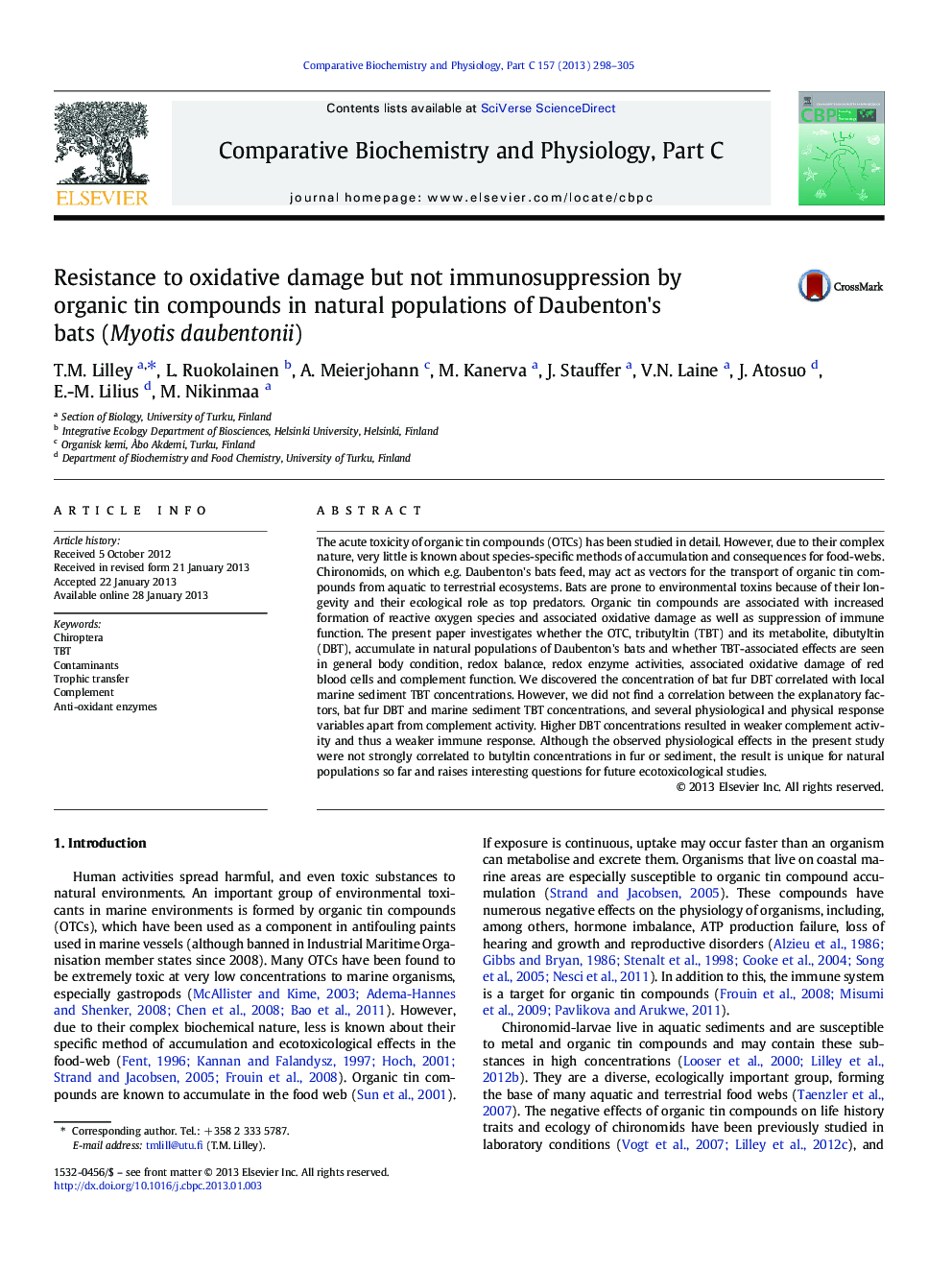| Article ID | Journal | Published Year | Pages | File Type |
|---|---|---|---|---|
| 10821719 | Comparative Biochemistry and Physiology Part C: Toxicology & Pharmacology | 2013 | 8 Pages |
Abstract
The acute toxicity of organic tin compounds (OTCs) has been studied in detail. However, due to their complex nature, very little is known about species-specific methods of accumulation and consequences for food-webs. Chironomids, on which e.g. Daubenton's bats feed, may act as vectors for the transport of organic tin compounds from aquatic to terrestrial ecosystems. Bats are prone to environmental toxins because of their longevity and their ecological role as top predators. Organic tin compounds are associated with increased formation of reactive oxygen species and associated oxidative damage as well as suppression of immune function. The present paper investigates whether the OTC, tributyltin (TBT) and its metabolite, dibutyltin (DBT), accumulate in natural populations of Daubenton's bats and whether TBT-associated effects are seen in general body condition, redox balance, redox enzyme activities, associated oxidative damage of red blood cells and complement function. We discovered the concentration of bat fur DBT correlated with local marine sediment TBT concentrations. However, we did not find a correlation between the explanatory factors, bat fur DBT and marine sediment TBT concentrations, and several physiological and physical response variables apart from complement activity. Higher DBT concentrations resulted in weaker complement activity and thus a weaker immune response. Although the observed physiological effects in the present study were not strongly correlated to butyltin concentrations in fur or sediment, the result is unique for natural populations so far and raises interesting questions for future ecotoxicological studies.
Related Topics
Life Sciences
Biochemistry, Genetics and Molecular Biology
Biochemistry
Authors
T.M. Lilley, L. Ruokolainen, A. Meierjohann, M. Kanerva, J. Stauffer, V.N. Laine, J. Atosuo, E.-M. Lilius, M. Nikinmaa,
